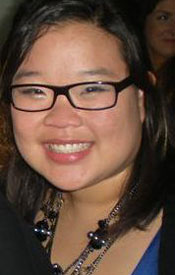Social media means different things to different people.
For some, tools like Twitter are at the Gutenberg level, while others place it at… the Guttenberg level. (Sorry Mahoney)
But the “debates” on whether it is the next printing press that causes revolutions around the world or the next Police Academy 3: Back in Training, focusing on what we’re having for lunch, to me, are looking at it wrong.
When I teach how to use social media for real-time reporting, I tend to get some of the same questions and comments either praising or dis’ing these applications.
– Why do I want to know about what celebrities had for lunch?
– It’s what caused the mass protests in Egypt, right?
– Doesn’t it hurt your relationships in real life?
– Twitter is the news source. Traditional news orgs are screwed.
Not exactly.
Twitter, Facebook and other social media applications have greatly affected our lives and influenced our culture… but, remember, it’s just a platform. A tool. An appliance, if you will.
I tell folks to frame social media apps just like a telephone.
There are hundreds of incredibly insightful, powerful conversations happening over the phone right now. But, there are also several thousands of mundane and truly painful “conversations” as well.
It’s not the telephone’s fault. It’s how people use it.
Extend this clunky metaphor to radio, TV, and printed publications. There is quality and there is crap. But, without a doubt, these platforms have each enhanced the way we communicate, share information and interact.
I was lucky enough to be in Washington, D.C., when Egypt erupted. D.C. is one of the few cities that carries Al Jazeera English.
With the news network on the television set and Tweetdeck launched on my laptop, I watched the coverage unfold, noticing that the station’s live coverage was the fastest and most complete news source. And, as they reported, I and other viewers tweeted/retweeted.
A few days before, I had seen someone once again claim that Twitter is the news source. In my opinion, it really isn’t. It’s a great aggregator where news and information – accurate or not – flows fast. But the “news” on Twitter tends to be coming from traditional news media.
Twitter is an invaluable platform. But it’s not really the source.
For the most part, when it comes to news, the source/content comes from traditional news sources. And that information gets shared with a vast network of users.
There are powerful reports from the ground, but the impact of the situation, for me, is really felt through the news sites.
So, it’s not the source, but it is one incredibly powerful platform.
We’ve all seen these headlines calling an Iranian Twitter revolution, Tunisia cyber-net revolution and, certainly now, Egypt’s social media uprising.
It’s a narrative many in the media are in love with, even though it cheapens the fact that people are risking more than just their Internet access. They are doing more than updating their status and streams.
There is no doubt these tools were used in all these historic events, but I would encourage us to be a little more hesitant in crediting it as the cause.
I imagine that this narrative was used when the printing press, radio or television were first introduced… a revolution caused by the platform. And I imagine that this is just a phase where a shiny new platform is an easy narrative to jump on.
But here’s the thing. It’s not an either/or issue. It’s both. The platform has facilitated the organization of the masses and empowers them to distribute the information in a new way.
There are lots of people writing about this topic. Here’s a collection of different points-of-views:
http://gigaom.com/2011/01/29/twitter-facebook-egypt-tunisia/
http://gov20.govfresh.com/a-tunisian-on-the-role-of-social-media-in-the-revolution-in-tunisia/
http://motherjones.com/interview/2011/01/evgeny-morozov-twitter-tunisia
http://www.thedailyshow.com/watch/thu-january-27-2011/the-rule-of-the-nile
My point overall is a simple one: Credit the people, acknowledge the platform, but put it all in perspective.
Robert Hernandez is a Web Journalism professor at USC Annenberg and co-creator of #wjchat, a weekly chat for Web Journalists held on Twitter. You can contact him by e-mail ([email protected]) or through Twitter (@webjournalist). Yes, he’s a tech/journo geek.


 Following
Following 





